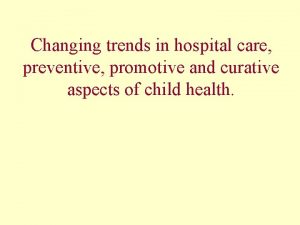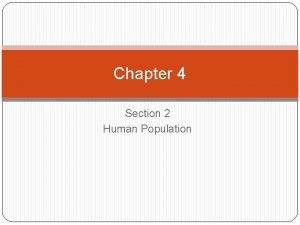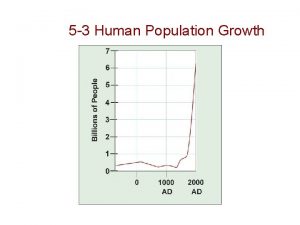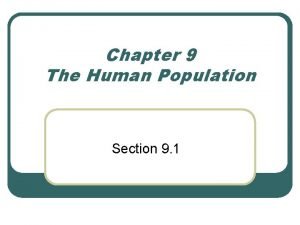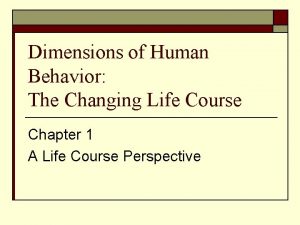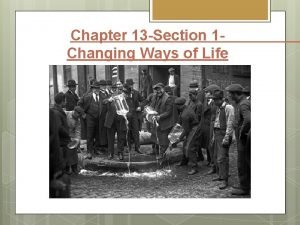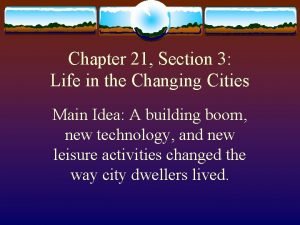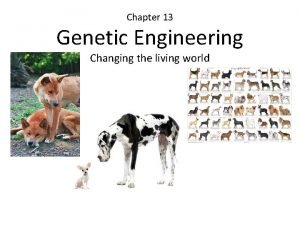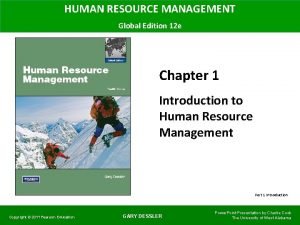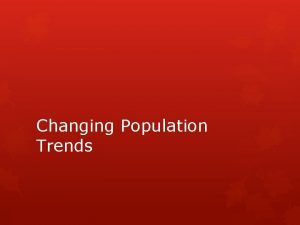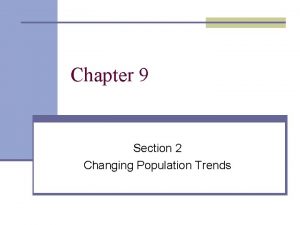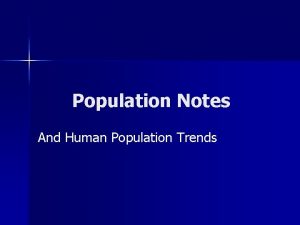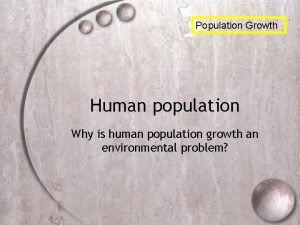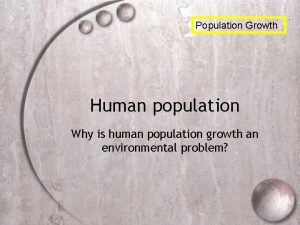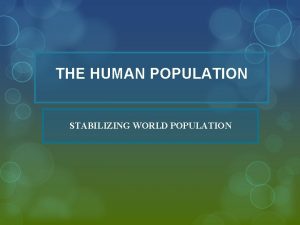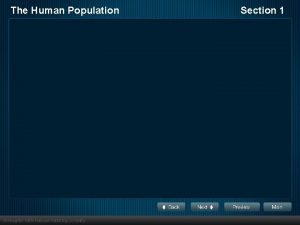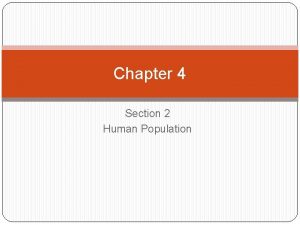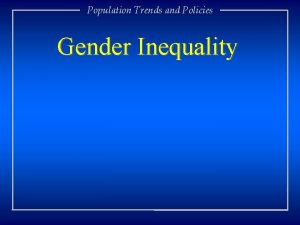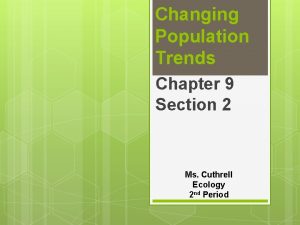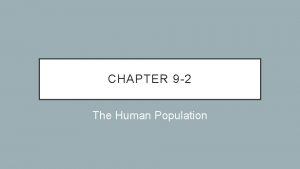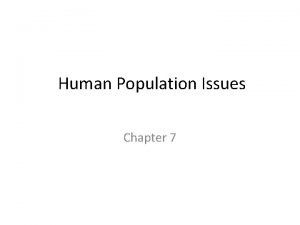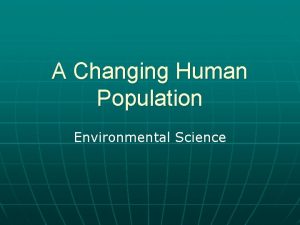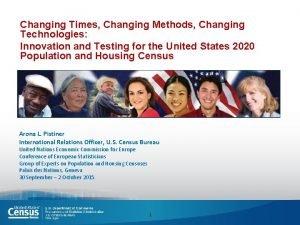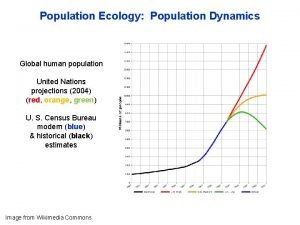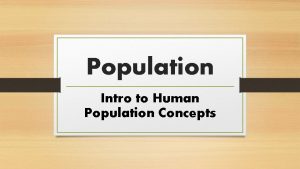The Human Population Section 2 Changing Population Trends























- Slides: 23

The Human Population Section 2 – Changing Population Trends

Changing Population Trends High rates of growth create environmental problems. Growing population - uses resources at an increased rate Overwhelm the infrastructure of a community.

Infrastructure - basic facilities of a country or region Roads, bridges, sewers, power plants, subways, schools, and hospitals.

Problems of Rapid Growth Resources are used faster than the environment can renew Standards of living decline Wood removed from forests Waste overwhelm water sources

A Shortage of Fuelwood Poor countries – wood is main source of fuel Stable populations – deadwood Unstable – live trees Africa, Asia, and India

A Shortage of Fuelwood Without fuelwood - many people suffer from disease and malnutrition Can’t boil water or cook food

Unsafe Water supplies can be used for drinking as well as washing or sewage disposal Disease Dysentery, typhoid, cholera


Unsafe Water 2001 – Over 1 billion people lacked clean water 3 million died Example: Rio Grande or Lima, Peru


Impacts on Land Arable land – land that can be used to grow crops Competing uses for land: housing, agriculture, or natural habitats

Arable Land in Egypt on the Nile 4% is arable

Urbanization – movement of people from rural areas to cities Work in city and live in suburbs Suburban sprawl – reduction in lands



A Demographically Diverse World More developed vs less developed Factors include: education, industry, income, etc Least developed countries – show few signs of development, increasing death rates, and high birth rates

Growth Rates

Managing Developing and Population Growth Population growth can limit economic development China, Thailand, and India have try to limit birth rate Public advertisements Planning programs Economic incentives Legal punishments


Worldwide fertility rates are dropping

Growth is Slowing Human population – 6 billion and growing Now closer to 7 87 million per year – 1985 to 1990 81 million per year – 1990 to 1995

Growth is Slowing Fertility Rates declined around 1970 Higher in less developed regions

Projections to 2050
 Changing trends in hospital care
Changing trends in hospital care Changing trends in occupation
Changing trends in occupation Chapter 4 section 1 population dynamics answer key
Chapter 4 section 1 population dynamics answer key Population ecology section 1 population dynamics answer key
Population ecology section 1 population dynamics answer key Population ecology section 1 population dynamics
Population ecology section 1 population dynamics Population ecology chapter 4 answers
Population ecology chapter 4 answers Chapter 4 section 2 human population answer key
Chapter 4 section 2 human population answer key Chapter 4 section 1 population dynamics
Chapter 4 section 1 population dynamics Population growth concept map answers
Population growth concept map answers Slow growth age structure diagram
Slow growth age structure diagram Chapter 9 the human population section 1
Chapter 9 the human population section 1 Dimensions of human behavior: the changing life course
Dimensions of human behavior: the changing life course Chapter 13 section 1 guided reading changing ways of life
Chapter 13 section 1 guided reading changing ways of life Chapter 21 section 1 changing ways of life
Chapter 21 section 1 changing ways of life Genetic engineering
Genetic engineering Section 6-1 a changing landscape
Section 6-1 a changing landscape Demographic trends affecting human resource management
Demographic trends affecting human resource management Chapter 9 section 1 labor market trends
Chapter 9 section 1 labor market trends Hình ảnh bộ gõ cơ thể búng tay
Hình ảnh bộ gõ cơ thể búng tay Ng-html
Ng-html Bổ thể
Bổ thể Tỉ lệ cơ thể trẻ em
Tỉ lệ cơ thể trẻ em Voi kéo gỗ như thế nào
Voi kéo gỗ như thế nào Chụp tư thế worms-breton
Chụp tư thế worms-breton
